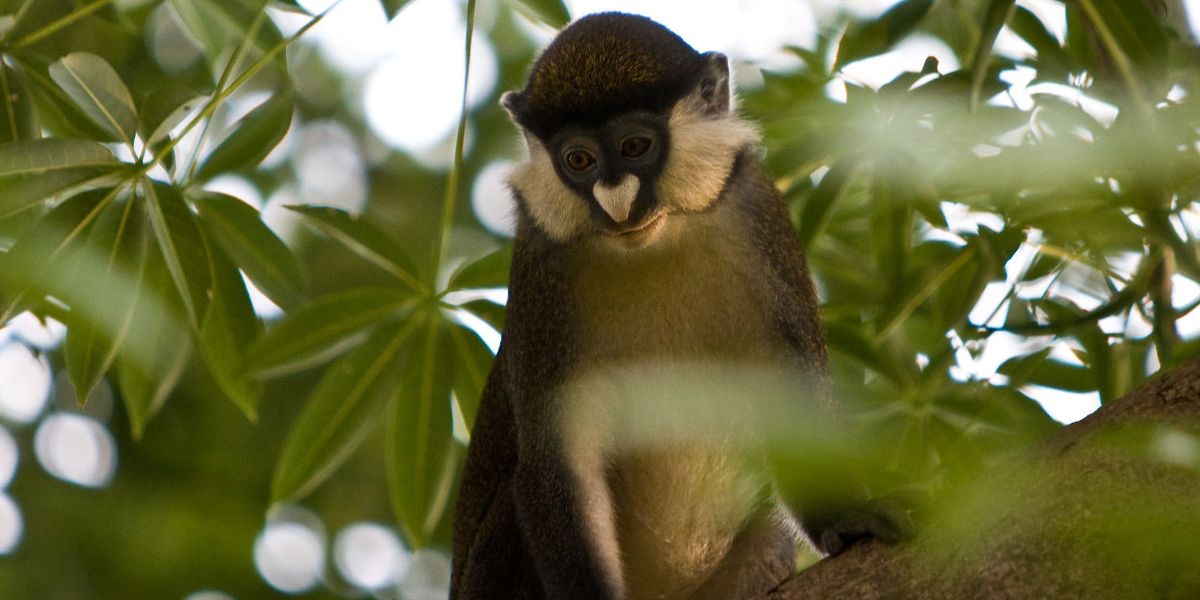
Baboons in the U.S., howler monkeys in Costa Rica, and baboons, chimpanzees, red-tailed monkeys, and red colobus in Uganda are all getting exposed to dangerous pesticides and flame-retardant chemicals, according to new research.
“We were surprised both at the number of chemicals measured in the feces and the levels of some of these chemicals in animals, especially those that are wild,” Marta Venier, an environmental chemist at Indiana University and senior author of the study, told EHN.
The study, published today in Environmental Science and Technology, is the first to examine these chemicals in both wild and captive primates, and suggests that, as humans increasingly encroach on their habitat, such species are at a high risk of chemical contamination.
The researchers also caution the findings are a warning sign that such pesticide and flame-retardant pollution is harming people as well.
“The presence of numerous anthropogenic chemicals in primates living in protected areas warrants an evaluation of the possible biological effects resulting from exposure,” the authors wrote.
Researchers collected feces samples from captive baboons at a primate sanctuary in Indiana; wild howler monkeys at a research station in Costa Rica; and wild baboons, chimpanzees, red-tailed monkeys, and red colobus monkeys from a national park in Uganda.
The red colobus and chimpanzees in Uganda are both endangered populations, Michael Wasserman, a researcher and assistant professor of anthropology and human biology at Indiana University and co-author of the study, told EHN.
“We think a lot about habitat disturbance, logging, and hunting as threats to these species, while pollution has been overlooked,” Wasserman said.
They tested the samples for a suite of contaminants—21 legacy pesticides, 29 pesticides currently in-use, 47 halogenated flame-retardants, and 19 organophosphate flame-retardants.
They found a suite of chemicals across the species.

Key findings:
· Three legacy pesticides (α-hexachlorocyclohexane, β-hexachlorocyclohexane and hexachlorobenzene) were most prevalent at all test sites;
· Chlorpyrifos was the most prevalent currently used pesticide found in Costa Rica and Indiana primates;
· For halogenated flame-retardants, decabromodiphenyl-ethane was most prevalent in Costa Rica and Indiana primates, while BDE-47 was most common in Uganda primates;
· Tris(2-butoxyethyl) phosphate was the most prevalent organophosphate flame-retardant across all sites.
They also found metabolites of the notorious chemical DDT across species, with the highest levels in red colobus and red-tailed monkeys.
It’s unclear what health impacts the chemicals could be having on the primates, however, in both human and animal studies most of the compounds have been linked to health risks, including hormone disruption, developmental problems, and impacts to immune and reproductive systems.
Several of the chemicals “can have toxic effects at low doses,” Venier said.
Also “animals, like humans, are exposed to multiple chemicals at once,” which could worsen impacts, she said.
Venier and colleagues previously tested the air in the locations for the same chemicals, and the “levels of some of the chemicals in air were comparable to what we see in Chicago, which was really surprising,” she said.
While there is pesticide-intensive farming in Uganda and Costa Rica, the source of the flame-retardants is less clear. The chemicals are found in everything from electronics like computers, tablets, phones, to mattresses and sofas.

“The areas we’re looking at, the protected areas, forests are more remote, but surrounding these areas are human activities and remnants of tropical forest,” Wasserman said. “In Uganda, there is some really high population density, with subsistence agriculture mixed with some industrial agriculture. These chemicals can move into the forest.”
They found higher levels of chemicals in feces from red colobus and red-tailed monkeys, which are both mostly plant eaters. The researchers said this could be explained by different patterns of excretion among the species, or that exposure is coming from crops, soil, or wild plants, rather than bioaccumulation from eating animals smaller on the food chain.
“Crops, soil … through the air deposited on wild plants they consume, these are all possibilities,” Wasserman said. He added that in some locations the primates could also be getting into human trash.
The study is in part a response to a major limitation of wildlife study—the ability to monitor what’s getting into animals. Researchers typically can’t draw blood or collect urine for wild animals—the two main ways they check human exposure—so the new study shows feces can offer an effective, non-invasive way of monitoring certain wild species.
The method is limited in that it’s unclear how much of the chemical load they find is from long-term exposure or “just flashing through the body and possibly not causing harm,” said Venier. She said they hope to tease this out in future studies.
Wasserman said, as important this is for understanding wildlife exposure, it offers a peek into our own chemical contamination as well.
“Primates are our closest living relatives, many are endangered, and we have these long-term research projects on primates all over the world that give detailed pictures of their behavior and physiology,” he said. “Adding this new method adds a novel insight into how these chemicals affect non-human primates—and humans.”
Banner photo: A red-tailed monkey in Jinja, Uganda. (Credit: Garrett Ziegler/flickr)



